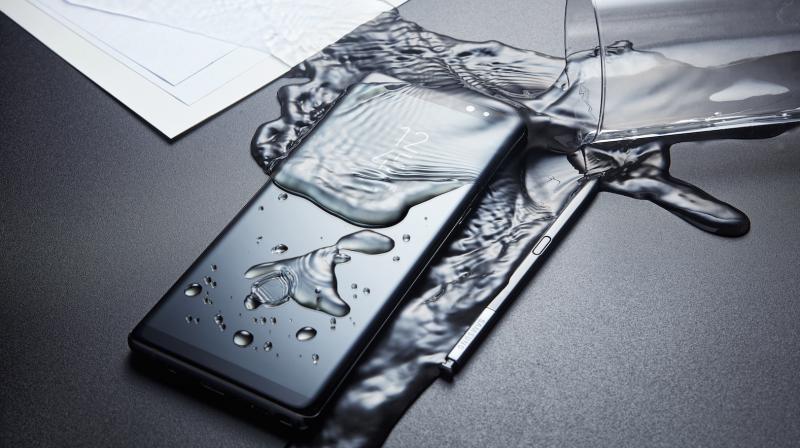Smartphone protection standards explained: IP ratings and MIL-STD ratings
Knowing about the ratings helps you protect your pricey investments from the adversaries of mother earth.

If you are spending a chunk of your fortune on a smartphone, you expect it to withstand the test of time while delivering its A-game for your daily smartphone requirements. These days, renowned smartphone manufacturers like Samsung and HTC often flaunt about ‘IP ratings’ on the brochures of their flagship offerings. Most of them claim that their phones are both dust and water resistant, which often translates to you phone staying safe even if you are using it in light drizzle or using it beside the pool.
However, there is often a question about how resistant is your phone or tablet to dust and water. There must be a limit to which your precious glass and metal slab of brilliance withstand before giving up. Fortunately, there are two professional standards to determine a portable device’s resistance to the forces of nature - IP ratings and MIL-STD ratings.
IP ratings:
This is the most widely used protection standard that adorns the retail boxes of most prominent smartphone brands. If you wonder what the IP68 rating for your Samsung Galaxy Note 8, then you will be happy to know that ‘IP’ in IP68 stands for Ingress Protection. ‘68’ is the numerical code to determine the extent of its resistance to forces of nature. To get a clear understanding of the numerical coding, go through what each number means. The first number denotes the protection against solid objects and the second number denotes protection against various levels of moisture.
|
| Solid protection |
| Moisture protection |
|---|---|---|---|
| 1 | Against object greater than 50mm, i.e. hand | 1 | Against water drops falling vertically |
| 2 | Against object greater than 12.5mm, i.e. a finger | 2 | Against water drops falling vertically with phone tilted to 15 degrees |
| 3 | Against thinner objects like a screwdriver | 3 | Against water sprays up to 60 degrees |
| 4 | Against thinner objects such as wires | 4 | Against water splashes |
| 5 | Against dust, won’t interfere with operations with minimal dust ingress | 5 | Against jets of water |
| 6 | Dust-tight, no dust allowed inside | 6 | Against powerful jets, tap water |
|
|
| 7 | Watertight; can be immersed in water up to 1 meter for 30 minutes |
|
|
| 8 | Watertight; can be immersed in water deeper for longer periods of time |
Therefore, it is now easy to decode how much protection your smartphone can provide to its internals. Therefore, the Galaxy Note 8’s IP68 rating means that it is dust proof and water resistant in swimming pools for longer periods of time.
MIL-STD ratings:
While IP ratings deal with ingress, MIL-STD deals with the durability of a device. MIL-STD stands for Military Standard protection of an appliance. The major intention of these tests is to see whether a particular device is durable enough to survive extremely rough abuse in the day to day life.
Drop/shock test is the primary factor in MIL-STD tests. Your phone or laptop has to survive drops on the floor as mobile devices are bound to accidental drops. You might find many smartphones of today with the MIL-STD-810G rating, one of them being the LG Q6, which is a mid-range smartphone. According to certification, the LG Q6 can withstand multiple drops from a height of four feet on a wooden plywood over concrete (that’s military transportation conditions, eg, a military transport truck). This doesn’t certify devices for direct drops on concrete or asphalt.
Apart from the drop and shock test, the MIL-STD-810G also includes testing in extremely low and high temperatures and resistance to moisture, fungus, salt, solar radiation and more. In essence, all of these tests ensure that your MIL-STD spec smartphone or laptop can accept most of the daily abuse with ease and continue working.
However, despite all of these ratings and certifications, you as a user should always remember that any electronic gadget is bound to break, just like any other commodity in the environment. Your smartphone or laptop can break, that is why manufacturers always say that they are dust and water resistant, not dust and waterproof. It is pretty important on the user’s part to use their electronic gadget with utmost care.

